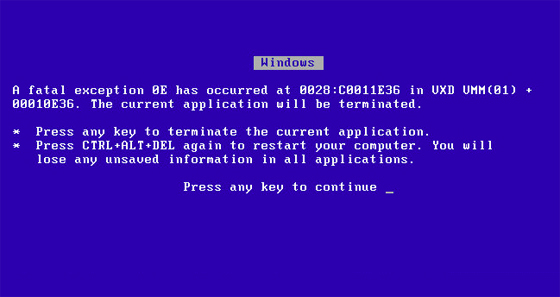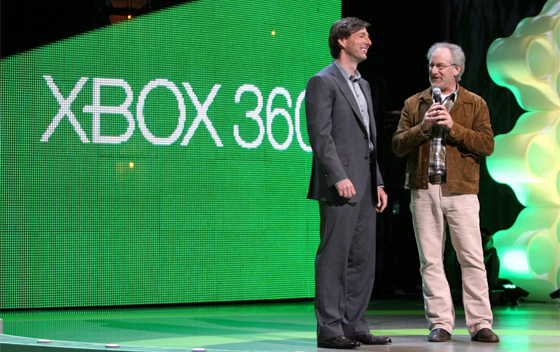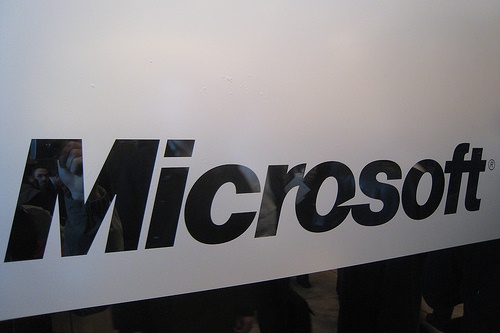The Windows brand has served Microsoft well for over 25 years — Windows 1.0 debuted on November 20th, 1985, paving the way for an operating system that has dominated desktop computing ever since. That paradigm for personal computing has changed with the rise of mobile, however. Windows 8 is an ambitious attempt to marry a desktop OS with a new touch-friendly interface designed for tablets and smartphones — but Microsoft would be well served to phase out the battered Windows brand for its mobile efforts.
Change is never easy for end users to accept or for big businesses to pull off; it’s impossible to alter a product millions of people around the world use on a daily basis without pissing off a few loud voices. Microsoft has experienced ups and downs with its massive customer base over the years, but never more so than the feedback around Windows Vista and Windows ME. Microsoft stumbled in the years leading up to Vista: while Apple was busy preparing its iPhone and iPad devices, Microsoft missed a crucial holiday sales season and shipped its latest release to retailers in January 2007. The changes in Vista alienated some users and created hardware compatibility issues with poor performance on some laptops, just as mobile computing was getting increasingly popular ahead of the netbook boom. The experience may have permanently impacted the Windows reputation.

“I THINK MICROSOFT HAS ABUSED THE WINDOWS BRAND SO MUCH THAT IT HAS LOST ITS CACHET.”
PAUL THURROTT, SUPERSITE FOR WINDOWS
“I think Microsoft has abused the Windows brand so much that it has lost its cachet,” says long time Microsoft watcher Paul Thurrott of Supersite for Windows. “I would like to see a scaling back on the usage of the name Windows in the future. But I do feel that the successors to Windows 8 should be called Windows.” Thurrott believes that Microsoft’s new user interface and app platform for Windows 8 wouldn’t have stood a chance alone as a separate OS, but that Windows RT could evolve into just being “Surface.” A switch away from the Windows brand would make a lot of sense on the consumer side in certain circumstances.
Windows 7 recovered from the early issues of Vista to provide a stable and much-loved Windows release, but security and stability issues from Windows XP (remember the MSBlast and Sasser worms?) and other releases have permanently damaged the perception of Windows among ordinary users. Your company may have had a firewall protecting the network, but it wasn’t enough if one of these viruses got in. The same was true if you were a home user connecting to the internet during the early XP days: Windows needed protecting and end users were the ones burdened with the maintenance and anti-virus updates. In my previous role handling support operations for a large American investment bank, end users struggling with their Windows laptops would regularly ask “why doesn’t this just work?” Windows — like Android in the mobile arena (and unlike Apple’s iOS) — has always been a very open operating system. The downside of this is that apps and other devices routinely break and require support.

THE IPAD REPRESENTS AN ALTERNATIVE TO WINDOWS
This negative perception of Windows, in some respects, has led consumers to look elsewhere. The iPad is selling well, killing some PC sales in a “post-PC” era — and leading consumers to refresh PCs a lot less frequently. PCs have become powerful enough to let consumers hold onto old hardware longer than ever, especially since popular cloud services typically require a less powerful machine and little to no local storage. The iPad represents an alternative to Windows: a world in which a consumer might be forced to use Windows at work but come home to a device that’s easy to use, has great battery life, and incorporates a natural interface for touch. The iPad can’t replace a PC for everybody, but it’s increasingly enough for a lot of people.
Microsoft tried its hand at tablet computing in late 2002, but the devices were held back by their weight, hardware, and infamous stylus instead of a responsive touchscreen and finger-friendly UI. With Windows 8, Microsoft has attempted to offer the best of both worlds. A touch-centric user interface makes it easy to use on a tablet and a desktop mode allows for traditional keyboard and mouse use. Despite Microsoft’s claims of “no compromise,” there are plenty of adjustments required if you’re a seasoned Windows user.
That’s where branding becomes so important. Like Windows Vista, Windows 8 is receiving mixed reviews from end users, reviewers, and analysts, all of whom are comparing it to other versions of Windows. If the tablet version was its own OS — not named “Windows,” — the reviews would likely be a lot less harsh. There are expectations borne of familiarity associated with the Windows name.

MICROSOFT SHOULD USE THE SURFACE BRAND TO ITS ADVANTAGE
Further complicating the branding issues, Microsoft has created Windows RT for ARM-based tablets which includes a traditional desktop mode that can’t run legacy software. Windows RT makes no sense to end users, who will associate the Windows brand with the look and feel of “normal” Windows. Surface (instead of Windows RT) and Surface with Windows 8 (for Windows 8 tablets) would make for an easier message. Microsoft has created excitement around its Surface tablets and brand — it could use that to its advantage.
Coupled with Windows’ existing perception issues, it’s a tough sell to expect consumers to opt for a Windows 8 tablet over Apple’s iPad. Following Windows 8’s release in October, Windows hardware sales dropped 12 percent compared to the same period last year,according to NPD statistics. Tablet sales have captured “less than one percent of all Windows 8 device sales to date,” says NPD, but its figures do not include Surface sales. Things are clearly off to a slow start on the tablet front for OEMs, but if the word Windows wasn’t involved, would things be better?
“FOR BETTER OR WORSE, THERE IS VALUE TO MICROSOFT IN THE NAME WINDOWS.”
WES MILLER, DIRECTIONS ON MICROSOFT
“I think replacing Windows with anything else would be a very risky move,” says Wes Miller, an analyst at Directions on Microsoftwho covers Redmond’s every move. “For better or worse, there is value to Microsoft in the name Windows, as antithetical as it may be to an operating system that now de-emphasizes overlapping windows.” That value is debatable for tablet and mobile computing, but as it moves in this direction, Windows is both a challenge and an opportunity.

“I THINK IT WOULD BE REALLY HARD AND EXPENSIVE FOR MICROSOFT TO MOVE AWAY FROM THE WINDOWS BRAND.”
MARY JO FOLEY, ZDNET
“I think it would be really hard and expensive for Microsoft to move away from the Windows brand,” says Mary Jo Foley, Editor of the All About Microsoft blog on ZDNet. “That said, I bet Windows Phones are the last ‘devices’ from MS or third parties that run some variant of Windows that include the word ‘Windows’ in the brand.” Foley is probably right: Microsoft might not even have to fully kill off the Windows name in one fell swoop. With the core of Windows 8 powering Windows Phone 8 and the upcoming Xbox, Microsoft is pushing forward with a project codenamed “Windows Blue” — an upgrade designed to improve compatibility with 7-inch and 8-inch devices and a move to a yearly update schedule for the OS. We’re told that Microsoft will stick with the Windows 8 name for its traditional OS for the foreseeable future, regardless of annual upgrades, but a shift elsewhere will make Windows increasingly irrelevant as a brand to consumers.
Microsoft’s Surface hardware and its plans to turn Xbox into an iOS-like platform could de-emphasize the importance of the Windows brand even further. A focus on Surface hardware in the future could leave the Windows brand open as an identifier for OEMs and businesses to use, while Microsoft secures its Surface brand with consumers. Laptop and desktop manufacturers have successfully tarnished the Windows brand themselves with crapware and a lack of solid hardware. Microsoft won’t want consumers to draw those connections going forward if it does phase out the use of the Windows brand.
ESTABLISHING A MICROSOFT BRAND WITHOUT WINDOWS HAS BEEN DONE BEFORE

There is hope. Establishing a new brand is extremely difficult, but Microsoft has had success: Xbox is a household name that continues to be increasingly popular, even though the Xbox 360 console has now been on the market for seven years. Microsoft is pushing the Xbox brand past just gaming these days, with entertainment services like Xbox Music and a host of streaming content. Xbox might not be the best choice to replace Windows, but anything is possible.
Windows has a lot of paths forward, but it’s clear that spending trends are shifting towards an era where consumers are no longer interested in purchasing devices for the familiarity or compatibility of Windows. Convenience is king and the experience rules. Microsoft is facing some fundamental changes in its business, and Surface is just the beginning.
Windows is Gates’ and Ballmer’s baby, but it’s not 1995 anymore — it’s time to let go.
Via: The Verge












